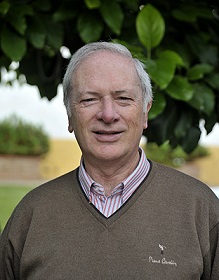The olive genetic patrimony Juan M. Caballero Ex-Chief
Olive Growing Department, IFAPA, Centro Alameda del Obispo, Córdoba juam.caballero@yahoo.com
Germplasm banks are basic tools for
selecting and breeding purposes because their objectives are to save and
characterize genetic resources, accumulated by centuries of selection,
cultivation, breeding and expansion. Olive genetic erosion mainly arises from
most of the world olive acreage being in marginal lands, which often leads to
up-rooting orchards in different areas. The establishment of the Olive World Germplasm Bank
(OWGB) of Córdoba (Centro Alameda del Obispo, IFAPA) in 1970 was the first important international attempt
to conserve and study the world olive cultivated biodiversity under field
conditions. This bank includes most of the total number of cultivated
varieties surveyed in Spain and also the main ones from almost all the
olive-growing countries. Its collection includes 900
accessions of 25 countries. Besides that, its main feature is the
secondary characterization work being developed since the beginning by several
research groups, mainly from IFAPA and Córdoba University. |








